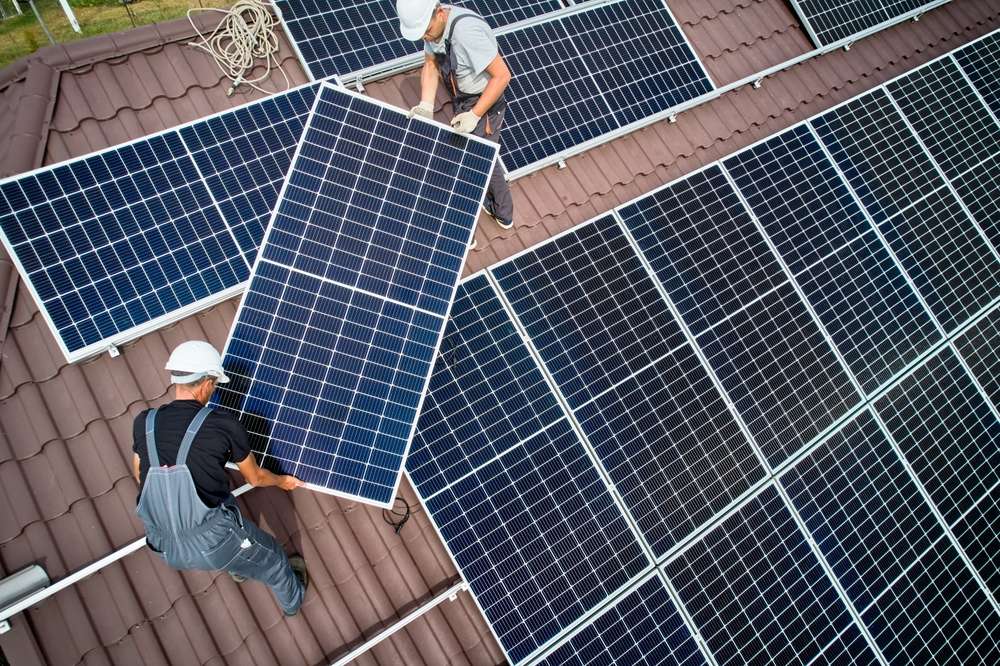Solar Roof Guide: Benefits, Installation & Home Improvement Tips
A solar roof is more than a trend — it’s an integrated approach that turns a house’s top surface into a clean energy generator while protecting the home. Whether you’re considering traditional solar panels mounted on an existing roof or an integrated solar roofing system, understanding performance, installation needs, and how it fits into broader home improvement plans will help you make an informed choice. This guide explains the core differences, practical considerations, and how a solar roof contributes to renewable energy goals and long-term household value.

What is a solar roof and how does it work?
A solar roof generally refers to roofing materials that generate electricity, either through integrated solar shingles or through conventional solar panels mounted on racks. Integrated options replace part or all of the conventional roofing material with photovoltaic (PV) tiles, while mounted solar panels sit on top of an existing roof. Both convert sunlight into electricity via PV cells and reduce grid dependence. Performance varies by technology, roof angle, and local climate. Understanding these basics helps homeowners weigh aesthetics, efficiency, and long-term maintenance expectations.
How do solar panels compare to integrated systems?
Solar panels tend to be more cost-effective per watt and are a mature, widely adopted technology with well-understood performance metrics. Integrated solar roofing offers a cleaner look and can be ideal during major roof replacement, but may cost more upfront and have different installation timelines. Panels are versatile and easier to upgrade or replace. When comparing options, consider system efficiency, warranties, visual impact, and whether you need a full reroof or want an overlay installation to minimize disruption.
Why choose renewable energy for your home?
Switching to renewable energy through a solar roof reduces greenhouse gas emissions and can stabilize energy costs over time. Beyond environmental benefits, solar installations can improve grid resilience—especially when paired with battery storage—and offer long-term savings on electric bills. Renewable energy systems often come with monitoring tools that let homeowners track production and consumption. The environmental and practical payoffs vary with sunlight availability, local utility rates, and how much of your energy needs you shift to onsite generation.
How does a solar roof fit into home improvement plans?
A solar roof can be part of a broader home improvement strategy, often increasing curb appeal and perceived home value. If your roof is near the end of its useful life, combining a roof replacement with a solar installation can be efficient: you get a new roof surface and start producing energy simultaneously. Coordinate with contractors so roofing warranties, solar warranties, and building permits align. Factor in timelines and potential disruptions; planning ahead helps integrate the solar project smoothly with other renovations.
What should you consider for roof installation and local services?
Roof installation for a solar system begins with an assessment of roof condition, orientation, pitch, and shading. A structural inspection determines whether reinforcement is needed to support panels. Permits, utility interconnection, and local services matter: look for installers experienced with local code and permitting processes in your area. Compare installer credentials, warranties, and post-installation support. Also plan for maintenance access and safety equipment. Good communication between roofer and solar installer reduces surprises and ensures a safer, more reliable installation.
Conclusion
Choosing a solar roof involves balancing aesthetics, performance, budget, and timing relative to other home improvements. Solar panels remain a cost-effective and flexible route, while integrated solar roofing appeals to homeowners prioritizing design and a single replacement event. Prioritize a thorough roof assessment, work with reputable local services, and consider long-term warranties and maintenance needs. With careful planning, a solar roof can deliver renewable energy benefits, improved home value, and a durable roof installation that serves both shelter and power generation for years to come.






